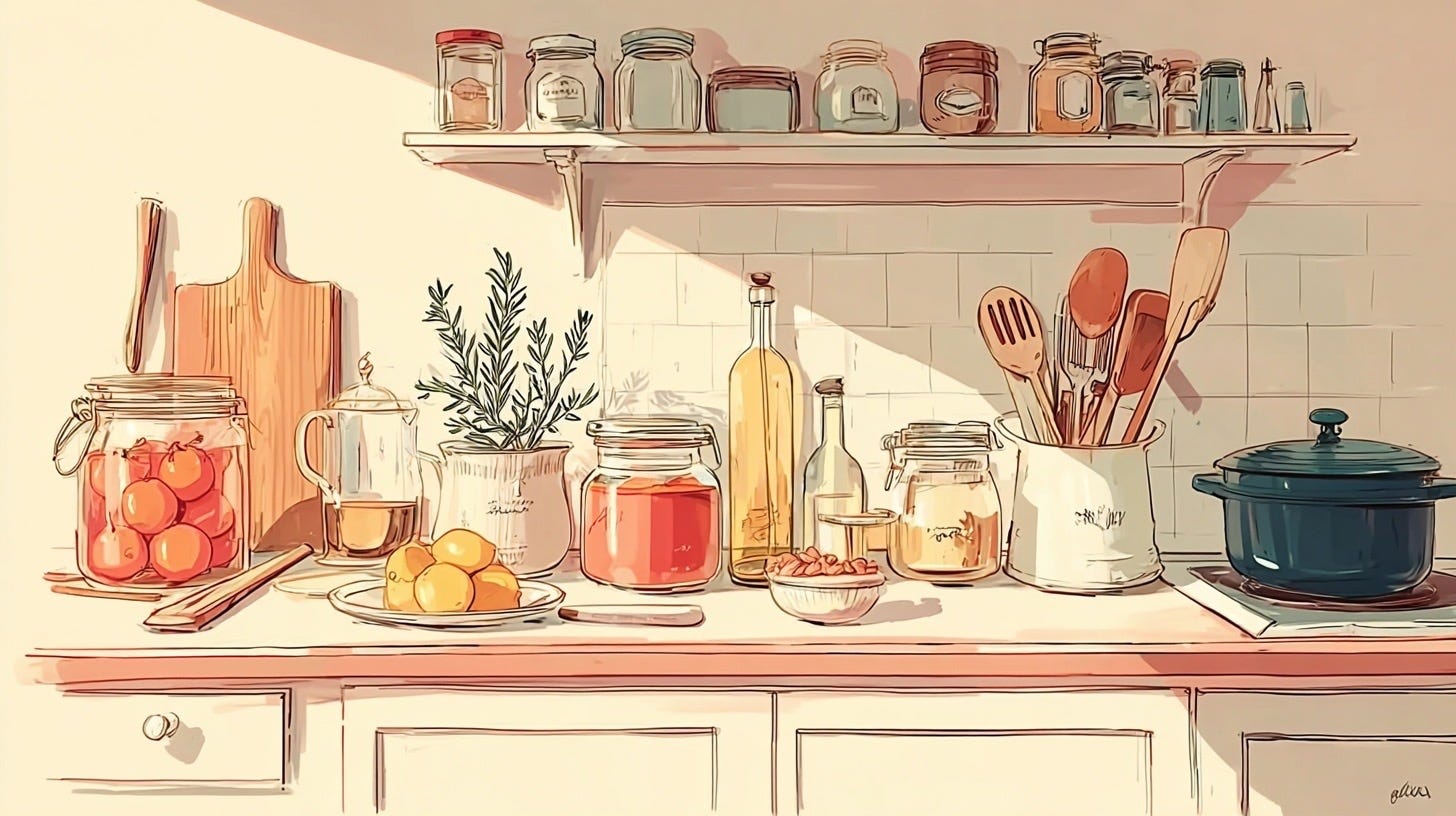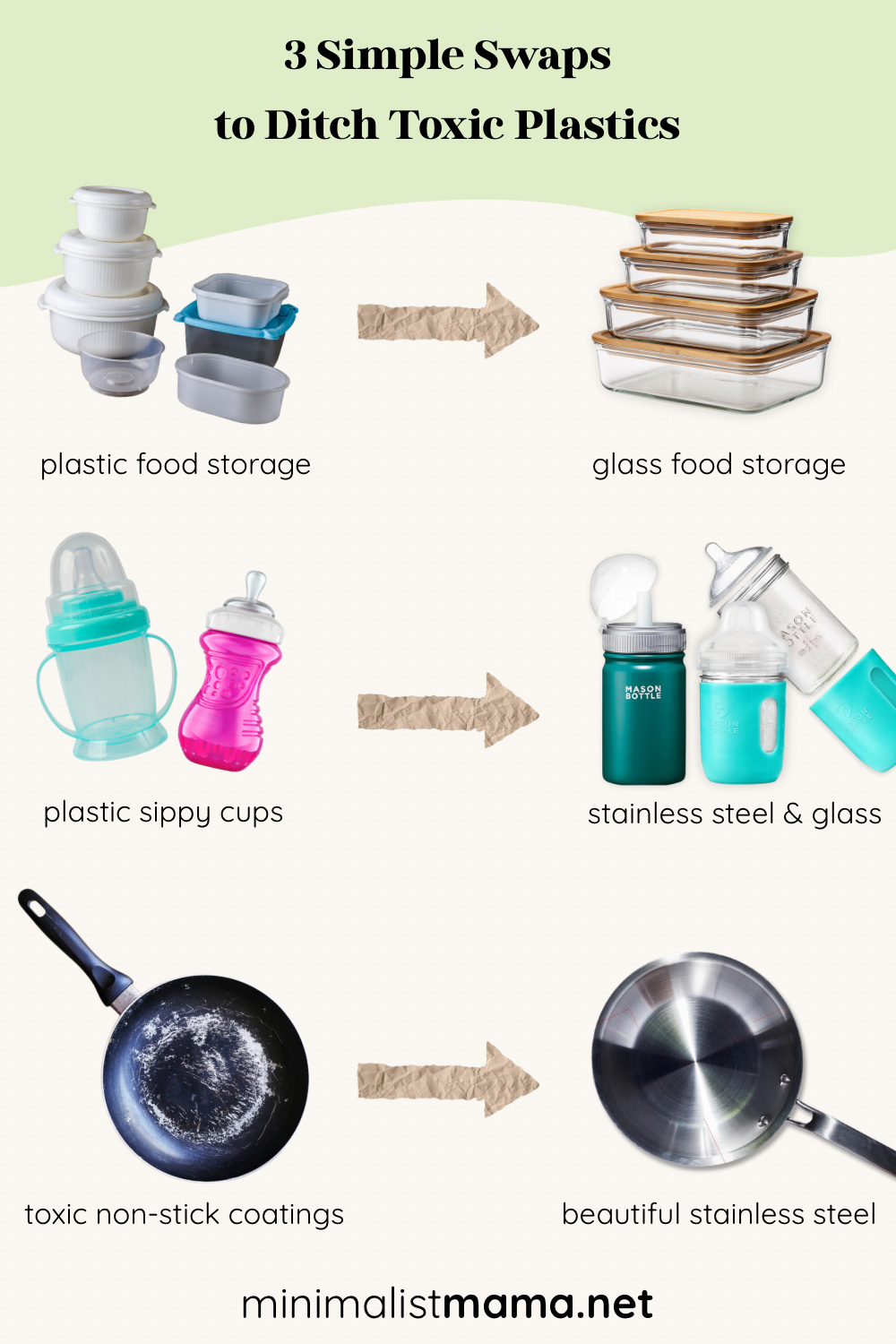The Truth About BPA-Free Plastics (and What to Use Instead)
“BPA-free” doesn’t mean non-toxic. It usually just means “swapped for something else equally harmful.”
Here’s what you actually need to know—and the only swaps worth making.
The Minimalist Solution
Glass for storage
Stainless steel for drinking
Never heat plastic
Replace items as they wear out (not all at once)
Why “BPA-Free” Is Marketing, Not Safety
BPA (bisphenol A) disrupts hormones, especially in developing children and pregnant women. After public pressure, companies replaced it with BPS and BPF—chemicals that do the exact same thing to your body, sometimes worse.
These replacements don’t show up on ingredient lists, but they still interfere with:
Brain development
Metabolism
Reproductive health
Immune function
So that “BPA-free” water bottle? Different plastic, same problems.
The Only 3 Swaps You Actually Need
Instead of spending days researching individual “safe” products (like I did), stick to versatile basics that work.
1. Glass Storage Containers
Start with Rubbermaid Brilliance Glass Containers. The lids are interchangeable between all sizes—true minimalist design. Or just repurpose pasta sauce jars. Free is better than perfect.
2. One Drinking Solution That Grows With Your Kids
Mason Bottle makes a variety of tops that turn any mason jar into:
One system. Multiple ages. No plastic sippy cup collection.
3. One Good Pan
If you cook daily, invest in stainless steel cookware that will outlast you. Start with one pan you’ll use every day, like this Made in USA stainless steel pan. Add more pieces only when your current ones scratch or wear out.
The Simple Transition Plan
Start with items that touch heat or fat (these accelerate chemical leaching):
Microwave containers → Glass
Plastic coffee cups → Stainless steel
Non-stick pans → Cast iron or stainless steel
Plastic baby bottles → Glass or steel
Keep using what works. That plastic measuring cup that only touches cold water? Not your priority. Focus on high-heat, high-fat contact points first.
What About Everything Else?
When current items wear out, replace with:
Wood or stainless steel cooking utensils
Glass or stainless steel plates and bowls
But don’t panic-purge your entire kitchen. That’s neither minimalist nor sustainable.
The Sustainable and Minimalist Approach
It's exhausting to constantly vet “BPA-free” plastics. Instead, a more sustainable and minimalist approach comes from using materials that have fed families for centuries: glass, steel, wood, ceramic.
They last longer. They work better. And they don’t require a chemistry degree to decode.
Save this for your next kitchen item replacement. One swap at a time keeps it manageable—and affordable.
Subscribe for more minimalist solutions that actually work for real families.
This post includes affiliate links. If you purchase through these links, I earn a small commission that helps keep Minimalist Mama running, at no cost to you!




